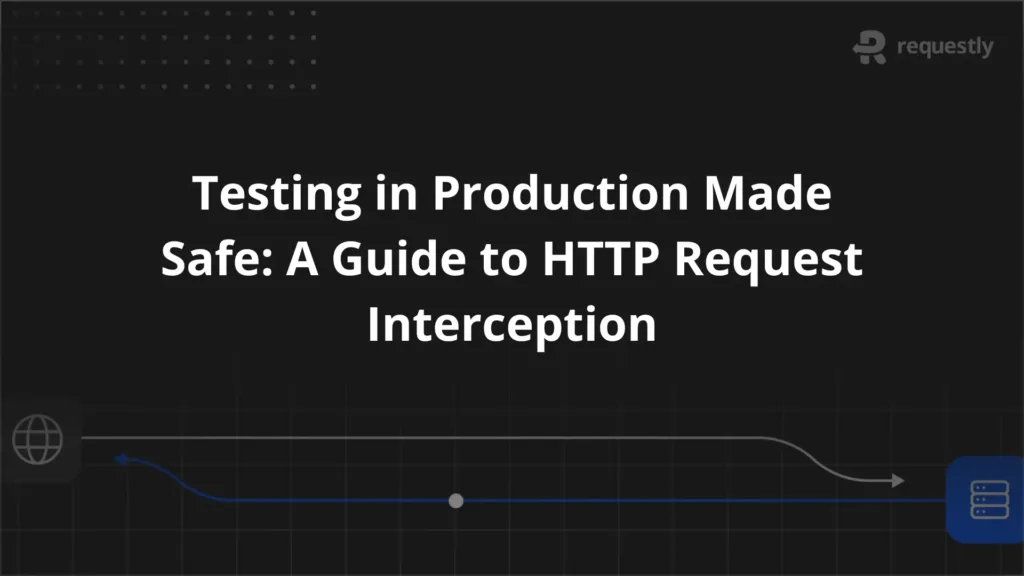API Simulation: Definition, Benefits, and Use Cases


Whether you are testing an integration between two internal services or a third-party system, stable and predictable APIs are critical. But real APIs are often unstable, unavailable, or simply not ready. This is where API simulation becomes useful.
Simulating APIs helps QA teams test early, debug reliably, and maintain control when dependencies are outside their control. It supports everything from functional tests to failure scenarios.
Understanding API Simulation
API simulation means mimicking the behavior of a real API without using the actual API. It creates a controlled environment that produces responses based on expected inputs. These simulated APIs behave like the real thing in terms of endpoint, structure, headers, latency, and responses.
A simulated API is not always just a static mock response. You can configure simulations to include dynamic responses, error conditions, or specific edge cases.
Good simulations help you replicate production-like behavior even when the actual service is unavailable or incomplete.
Why QAs Use API Simulation
QA teams rely on simulation to test thoroughly and independently of backend readiness or external dependencies. Key reasons include:
- Early Testing: Teams don’t have to wait for the real API to be built. You can simulate responses to test frontend components or intermediate services.
- Control Over Edge Cases: Simulations let you test how your system reacts to errors, timeouts, and invalid payloads, which can be hard to reproduce with real APIs.
- Speed and Stability: Real APIs may have rate limits, long processing times, or intermittent issues. Simulations are faster and don’t introduce random instability.
- Test Isolation: With simulation, tests are not dependent on the availability or state of another team’s API, improving reliability and repeatability.
- Working Around Access Restrictions: Some APIs may need credentials, IP whitelisting, or payment plans. Simulating them avoids these restrictions.
Common Scenarios Where API Simulation Helps
API simulation can be useful throughout the development and testing lifecycle. Here are common scenarios where it adds real value:
- Third-party API Integration: When integrating with payment gateways, social logins, analytics, etc., real APIs may be rate-limited or charge per request.
- Backend Not Ready Yet: During frontend development, the backend endpoints may not exist yet. Simulated APIs help developers and QAs proceed in parallel.
- Negative Testing and Error Handling: Creating real-world failures (like 503s, 400s, latency) is hard with live APIs. Simulation lets you test failure paths.
- Load Testing: You might want to simulate downstream systems to check how your application behaves under heavy traffic.
- Dependency Failures: Simulating unresponsive or misbehaving APIs helps ensure your system doesn’t fail catastrophically.
- Compliance and Privacy: When dealing with sensitive APIs, real data may be restricted. Simulations avoid the risk of exposing actual PII (Personally Identifiable Information).
API Simulation vs Mocking, Stubbing, and Service Virtualization
Mocking, stubbing, API simulation, and service virtualization all try to replicate the behavior of dependencies. But they differ in how they work, where they are used, and what level of the stack they operate on.
Method | Use Case | Where It Runs | Scope | Common Users |
Mocking | Unit testing | Inside application code | Individual methods/functions | Developers (Unit Testers) |
Stubbing | Component testing | Inside application code | Predefined static responses | Developers |
API Simulation | Integration/system testing | External (network level) | Endpoint-level response behavior | QA, Frontend, Integration |
Service Virtualization | Enterprise integration testing | External (enterprise tools) | Full service emulation | Enterprise QA/DevOps teams |
How API Simulation Fits into Test Planning and QA Workflows
API simulation should be included in the test strategy as a defined part of how you design, write, and run tests across stages.
- Test Planning Phase: Teams should map out which APIs might be unavailable or unstable and list these as candidates for simulation. This includes internal services in early development or external services with usage constraints.
- Test Case Design: While writing test cases, include simulated API responses for both expected and unexpected cases. Define timeouts, different HTTP response codes, invalid data, and schema violations.
- CI/CD Workflows: Include simulation setup steps in your pipeline. Avoid external API calls that make builds flaky. Simulated APIs provide consistent and repeatable behavior for automated tests.
- Parallel Development: Simulation allows QA, frontend, and backend to work at the same time. For example, frontend testers can simulate APIs before backend delivery.
- Test Environments: Instead of relying on shared staging systems, use simulated endpoints for specific test environments. This gives you full control over the data, behavior, and availability of services needed during testing.
Common Scenarios for API Simulation
API simulation is used during development and testing to mimic the behavior of real APIs. This helps teams continue building and validating features even when actual services are unavailable or unstable.
- Development without backend: Allows frontend or client-side developers to work before the backend API is ready by using predefined mock responses.
- Isolated component testing: Lets developers focus on one component at a time without relying on other services, which may still be under development or prone to failure.
- Network-independent development: Simulated APIs provide fast, local responses, avoiding delays or failures caused by remote network issues.
- Controlled test scenarios: Enables testers to simulate rare, error-prone, or edge-case responses that are difficult to produce in a real environment.
- Stable test environment: Reduces test flakiness by avoiding changes or instability in external APIs during automated testing.
Common Pitfalls in API Simulation and How to Avoid Them
API simulation is valuable, but if not used carefully, it can create false confidence or lead to fragile systems. Here are common pitfalls, why they matter, and how to handle them:
- Over-simplified mocks: Mocks that simulate only successful responses miss how the system handles errors, invalid input, and edge cases. You can avoid this by adding error codes, malformed data, and failure scenarios to your mocks.
- Outdated mock data: As APIs evolve, stale mocks fall out of sync, leading to integration issues and wasted debugging time. Tests may pass in simulation but fail in production. To fix this, sync mocks regularly with the latest API contract or generate them from a shared spec.
- Unrealistic performance: Fast mock responses can hide real-world issues like latency, timeouts, and unreliable connections. This gives a false sense of system reliability. You can avoid this by simulating delays, slowdowns, and throttling to match production behavior.
- Missing real API validation: Relying only on mocks skips differences in live API behavior, such as subtle bugs or format mismatches and leads to late-stage issues. The solution is to run integration tests against the actual API before deployment.
- Misaligned assumptions across teams: Teams working from separate mock setups often make conflicting decisions about request formats, responses, or error handling. You can prevent this by using a shared API contract as the single source of truth for all teams.
Using Requestly to Simulate APIs Without Changing Backend Code
Requestly by BrowserStack is a tool that lets you intercept and change network requests directly from your browser or desktop. It allows you to mock API responses, modify request and response data, and redirect calls to different endpoints. This can be done without updating any backend code, making it useful for development and testing.
Key Features of Requestly for API Simulation
- Modify API responses: You can intercept HTTP responses and change the body, headers, or any other part of the response. This helps test how the frontend handles different server outputs.
- Modify API request body: Requestly allows you to change request payloads before they are sent. You can test how your application behaves with different inputs, without changing the application code.
- Simulate HTTP Status Codes: You can return different HTTP status codes like 400, 401, or 500. This is useful to check how your app handles errors and fallback scenarios.
- Create Mock Endpoints: You can define mock endpoints that behave like real APIs. These custom mappings return pre-configured responses based on incoming requests.
- Supports GraphQL API overrides: It also supports GraphQL. You can match GraphQL operations and return mock responses for specific queries or mutations.
Conclusion
API simulation allows teams to test integrations, edge cases, and failure scenarios without depending on real services. It helps avoid delays caused by unavailable or unstable APIs and supports early-stage development and testing. Simulation also improves coverage by making it easier to test negative conditions, non-happy paths, and varying data patterns.
Requestly simplifies how teams implement API simulation. It supports a range of use cases like request/response overrides, error injection, and GraphQL mocking. For frontend-heavy teams or testers needing fast feedback loops, Requestly offers an easier way to simulate real-world API conditions without changing the backend code.

Contents
- Understanding API Simulation
- Why QAs Use API Simulation
- Common Scenarios Where API Simulation Helps
- API Simulation vs Mocking, Stubbing, and Service Virtualization
- How API Simulation Fits into Test Planning and QA Workflows
- Common Scenarios for API Simulation
- Common Pitfalls in API Simulation and How to Avoid Them
- Using Requestly to Simulate APIs Without Changing Backend Code
- Conclusion
Subscribe for latest updates
Share this article
Related posts






















